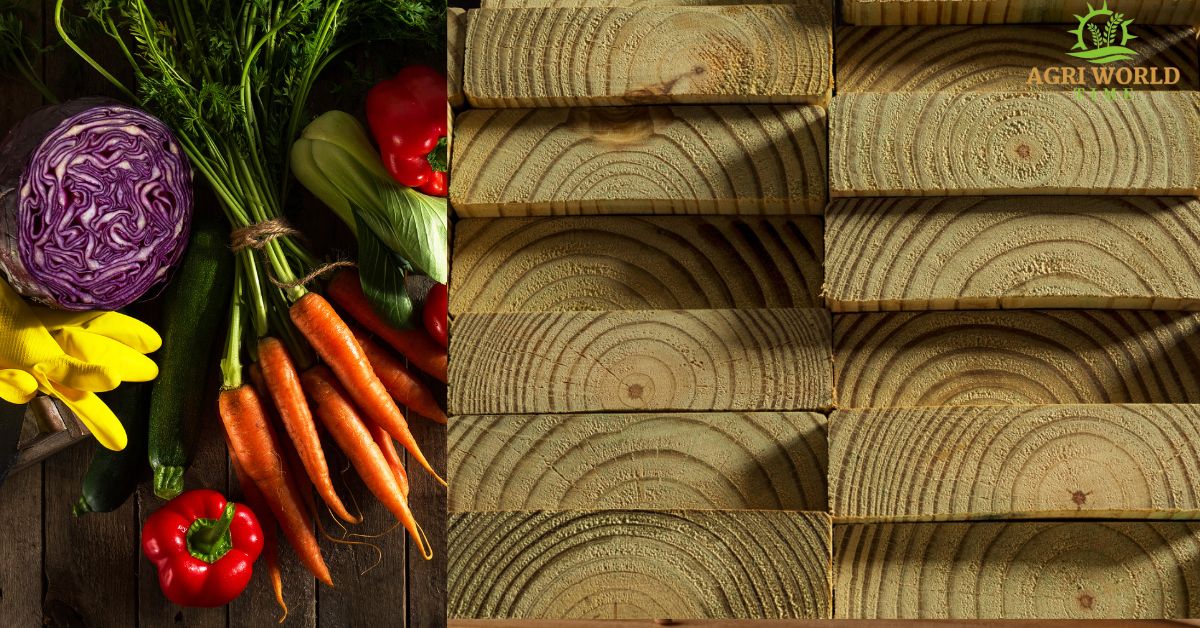In the realm of gardening, the choice of materials plays a pivotal role in the success of your garden. One of the key decisions many gardeners face is whether or not to use pressure-treated lumber, especially when it comes to constructing raised beds for vegetable gardens. Home Depot, a renowned home improvement retailer, offers pressure-treated lumber as an option. But is Home Depot pressure-treated lumber safe for vegetable gardens? In this article, we will delve into the intricacies of pressure-treated lumber, its potential risks, and whether it is a suitable choice for your cherished vegetable patch.
Understanding Pressure-Treated Lumber
What is Pressure-Treated Lumber?
Pressure-treated lumber is a type of wood that has been treated with chemicals to enhance its durability and resistance to decay. This treatment involves placing the wood in a pressurized tank and infusing it with preservatives, which penetrate deep into the wood fibers.
The Types of Pressure Treatment
Not all pressure-treated lumber is created equal. There are two primary types of pressure treatment: CCA (chromated copper arsenate) and ACQ (alkaline copper quaternary). The choice of treatment can significantly impact the safety of using the lumber in your vegetable garden.
Is Home Depot’s Pressure-Treated Lumber Safe?
When you walk into Home Depot, you’ll find pressure-treated lumber readily available for various construction projects, including garden beds. However, the safety of vegetable gardens is a matter of concern, and it depends on several factors.
Type of Treatment
Home Depot primarily sells ACQ-treated lumber, which is free of arsenic and chromium, making it a safer choice for gardening. ACQ-treated lumber has become the industry standard due to its lower toxicity levels.
Contact with Soil
One critical factor to consider is the level of contact the lumber will have with the soil in your vegetable garden. Plan to use pressure-treated lumber for raised beds. The lumber may come into direct contact with the soil, which raises questions about the transfer of chemicals to your crops.
Liner or Barrier
To address concerns about chemical leaching, many gardeners opt to line or create a barrier between the pressure-treated lumber and the soil. This barrier, often made of heavy-duty plastic or landscape fabric, prevents direct contact, reducing the risk of chemical transfer.
Plant Selection
The choice of plants you intend to grow in your vegetable garden also plays a role. Some plants are more sensitive to chemical exposure than others. It’s essential to research the specific needs of your chosen vegetables and how they may interact with pressure-treated lumber.
Best Practices for Using Pressure-Treated Lumber in Vegetable Gardens
If you decide to use Home Depot’s pressure-treated lumber in your vegetable garden, follow these best practices to ensure safety and success:
Use ACQ
Treated Lumber: Opt for lumber treated with alkaline copper quaternary to minimize chemical risks.
Create a Barrier:
Implement a barrier between the lumber and soil to prevent direct contact.
Choose Resistant Plants:
Select vegetable varieties that are less likely to absorb chemicals from the lumber.
Monitor and Maintain:
Regularly inspect your garden beds and address any signs of deterioration or chemical leaching promptly.
Conclusion
In conclusion, Home Depot’s pressure-treated lumber can be used in vegetable gardens, but it requires careful consideration and precautions. By choosing the right type of treatment, using barriers, selecting suitable plants, and diligent maintenance, you can mitigate potential risks and create a safe environment for your vegetables to thrive.
FAQs
1. Are all types of pressure-treated lumber safe for vegetable gardens?
No, not all types are safe. ACQ-treated lumber is generally considered safer due to its lower toxicity levels.
2. Can I use pressure-treated lumber without any barrier in my vegetable garden?
While it’s possible, it’s advisable to use a barrier to minimize the risk of chemical transfer to your crops.
3. Are there alternative materials to pressure-treated lumber for raised beds?
Yes, alternatives include cedar, redwood, and composite lumber, which are naturally resistant to decay and often preferred for organic gardening.
4. How often should I inspect my raised beds for potential issues?
Regularly inspect your garden beds at least once a season to catch any signs of deterioration or chemical leaching early.
5. What precautions should I take when working with pressure-treated lumber?
When cutting or drilling pressure-treated lumber, wear appropriate protective gear and avoid inhaling sawdust or wood shavings. Dispose of any waste material properly.

